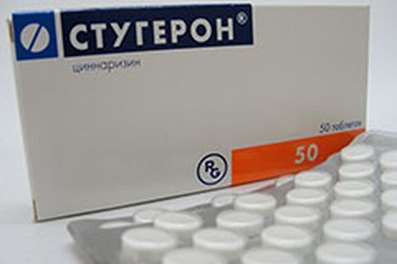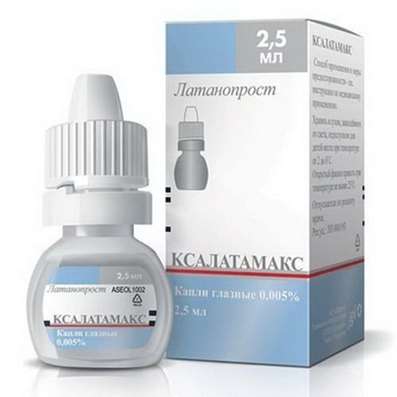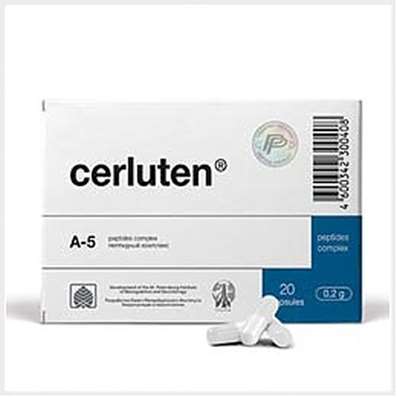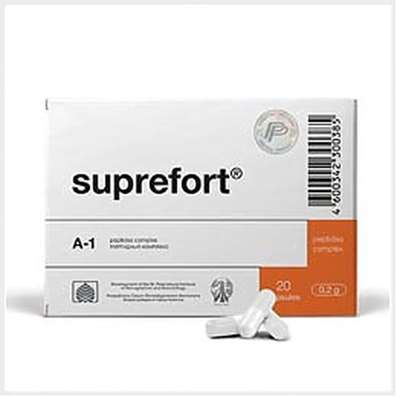Instruction for use: Ketorol
I want this, give me price
Active substance Ketorolac
ATX Code ĀŌÕ M01AB15 Ketorolac
Pharmacological group
Non-steroidal anti-inflammatory drug [NSAIDs - Acetic acid derivatives and related compounds]
Nosological classification (ICD-10)
C80 Malignant neoplasm without specification of localization
Malignant tumor, Malignant neoplasm, Malignant neoplasms of different localization, Malignant tumors, Eton-Lambert syndrome, Locally prevalent forms of malignant neoplasms, Metastatic ascites, Cerebellar degeneration in tumors, Hereditary cancers, Metastatic tumors, Cancer ascites, Solid tumors
K08.8.0 * Painful toothache
Dentinal pain, Dentinal pains, Pain pulpitis, Anesthesia in dentistry, Pain syndromes in dental practice, Pain after removal of tartar, Pain when extracting a tooth, Toothache, Pain after dental interventions
M25.5 Pain in the joint
Arthralgia, Pain syndrome in musculo-articular diseases, Pain syndrome in osteoarthritis, Pain syndrome in osteoarthritis, Pain syndrome in acute inflammatory diseases of the musculoskeletal system, Pain syndrome in chronic inflammatory diseases of the musculoskeletal system, Pain in the joints, Soreness of the joints, Soreness of joints in severe physical exertion, Painful inflammatory joint damage, Painful conditions of the musculoskeletal system, Painful joint conditions, Painful traumatic affection of joints, Pain in the musculoskeletal system, Pain in Shoulder Joints, Pain in the joints, Joint pain, Joint pain with injuries, Musculoskeletal pain, Pain with osteoarthritis, Pain in the pathology of the joints, Pain in rheumatoid arthritis, Pain in chronic degenerative bone diseases, Pain in chronic degenerative joint diseases, Bone-joint pain, Joint pain, Arthritic pain of rheumatic origin, Articular pain syndrome, Joint pain, Rheumatic pain, Rheumatic pains
M54 Dorsalgia
Pain in the back area, Pain in the spine, Back pain, Pain in different parts of the spine, Backache, Painful pain syndrome in the spine, Pain in the musculoskeletal system
M54.1 Radiculopathy
Acute sciatica, Radiculopathy, Radiculitis, Radiculitis with radicular syndrome, Acute radiculopathy, Pain syndrome with radiculitis, Subacute radiculitis, Radiculitis, Chronic radiculitis, Diseases of the spinal column
M79.0 Other unspecified rheumatism
Degenerative rheumatic disease, Degenerative and rheumatic diseases of the tendons, Degenerative rheumatic diseases, Localized forms of rheumatism of soft tissues, Rheumatism, Rheumatism with a pronounced allergic component, Rheumatism of the articular and extraarticular, Rheumatic attack, Rheumatic complaints, Rheumatic diseases, Rheumatic disease of the spine, Relapses of rheumatism, Articular and extra-articular rheumatism, Articular and muscular rheumatism, Articular rheumatism, Articular syndrome with rheumatism, Chronic rheumatic pain, Chronic articular rheumatism, Rheumatoid diseases, Rheumatic diseases of the intervertebral disc
M79.2 Neurology and neuritis, unspecified
Pain syndrome with neuralgia, Brachialgia, Occipital and intercostal neuralgia, Neuralgia, Neuralgic pain, Neuralgia, Neuralgia of intercostal nerves,Neuralgia of the posterior tibial nerve, Neuritis, Neuritis traumatic, Neuritis, Neurological Pain Syndromes, Neurological contractures with spasms, Acute neuritis, Peripheral neuritis,Post-traumatic neuralgia,Severe pain of a neurogenic nature, Chronic neuritis, Essential neuralgia
R52.0 Acute pain
Acute pain syndrome, Acute pain syndrome with osteoarthritis, Acute pain syndrome of traumatic origin, Severe pain of a neurogenic nature, Severe pain, Pain syndrome at delivery
R52.1 Constant unrestrained pain
Pain syndrome in oncology practice, Pain syndrome pronounced, Pain syndrome in malignant neoplasms, Pain syndrome in cancer, Pain syndrome with tumors, Pain syndrome in cancer patients, Pain in malignant neoplasms, Pain in malignant tumors, Pain in tumors, Pain in cancer patients, Pain in bone metastases, Pain in cancer, Malignant pain syndrome, Intensive chronic pain, Intensive pain syndrome, Intensive non-curable pain syndrome, Intensive chronic pain syndrome, Unrestrained pain, Unrestrained pain, Tumor pain, Post-traumatic pain syndrome, Severe pain, Chronic pain, Chronic Pain Syndrome
R52.9 Unspecified Pain
Pain after cholecystectomy, Pain shooting, Non-malignant pain, Obstetric and gynecological pain, Pain syndrome, Pain in the postoperative period, Pain in the postoperative period after orthopedic surgery, Pain of inflammatory genesis, Pain than cancer genesis, Pain syndrome after diagnostic procedures, Pain after surgery Diagnostic, Pain after surgery, Pain after orthopedic surgery, Pain after injuries, Pain after the removal of hemorrhoids, Pain at the non-rheumatic inflammation of nature, Pain in inflammatory lesions of the peripheral nervous system, Pain in diabetic neuropathy, Pain in acute inflammatory diseases of the musculoskeletal system, Pain when the tendon pathology, Pain smooth muscle spasm, Pain spasm of smooth muscles (renal and biliary colic, intestinal spasms, dysmenorrhea), Pain spasm of smooth muscles of internal organs, Pain spasm of smooth muscles of internal organs (kidney and biliary colic, intestinal spasms, dysmenorrhea), Pain in trauma syndrome, Pain with injuries and after surgical interventions, Pain in chronic inflammatory diseases of the musculoskeletal system, Pain with duodenal ulcer, Pain syndrome in gastric ulcer, Pain syndrome in gastric ulcer and duodenal ulcer, pain, Pain during menstruation, pain syndromes, painful condition, Painful foot fatigue, Sore gums when wearing dentures, Soreness of the cranial nerves exit points, Painful menstrual irregularities, Painful dressings, Painful muscle spasm, Painful teeth growth, Melosalgia, Pain in the area of the surgical wound, Pain in the postoperative period, Pain in the body, Pain after diagnostic procedures, Pain after orthopedic surgery, Pain after surgery, The pains of the flu, Pain in diabetic polyneuropathy, Pain for burns, Pain during sexual intercourse, Pain during diagnostic procedures, Pain during therapeutic procedures, for colds Pain, Pain in sinusitis, Pain in trauma, Pain traumatic, The pain in the postoperative period, Pain after diagnostic procedures, The pain after sclerotherapy, Pain after surgery, postoperative Pain, Pain postoperative and posttraumatic, posttraumatic pain, Pain when swallowing, Pain in infectious and inflammatory diseases of the upper respiratory tract, The pain of burns, The pain in traumatic muscle injury, Pain in trauma, The pain of tooth extraction, The pain of traumatic origin, Pain caused by spasm of smooth muscles, Expressed pain syndrome, Expressed pain syndrome, traumatic origin, Postoperative pain, Post-traumatic pain, Post-traumatic pain syndrome, Torpid pain, Traumatic pain, Traumatic pain, Mild pain, Moderately severe pain, Moderate pain, Polyarthralgia with polymyositis
R68.8.0 * Inflammatory syndrome
Painful syndrome of inflammatory genesis, Pain syndrome with inflammation of non-rheumatic nature, Pain syndrome with inflammatory lesions of the peripheral nervous system, Painful inflammation of the shoulder joint, Painful inflammation after trauma or surgery, Painful inflammation after surgery, Painful hemorrhoids, Inflammation of the tympanic membrane, Inflammation of the larynx, Inflammation of the gums, Inflammation of cellulose, Inflammation of lymph nodes, Tonsillitis, Inflammation of muscles, Inflammation of soft tissues, Inflammation of the mouth, Inflammation after surgery and trauma, Inflammation after orthopedic surgery, Inflammation after trauma, Inflammation in rheumatoid arthritis, Inflammation of the middle ear, Inflammatory gum disease, Inflammatory diseases of the eyelids, Inflammatory eye diseases, Inflammatory swelling of soft tissues, Inflammatory processes, Inflammatory processes after surgical interventions, Inflammatory process, Inflammatory Syndrome, Inflammatory syndrome of non-rheumatic origin, Inflammatory syndrome after surgery, Purulent infections, Infringements of function of a liver of an inflammatory etiology, Acute inflammation of the musculoskeletal tissue, Pre-inflammatory soft tissue inflammation
T14.9 Injury unspecified
Pain syndrome after trauma, Pain syndrome with injuries, Pain syndrome with trauma and after surgery, Pain in case of injury, Pain of a traumatic nature, Joint pain with injuries, Postoperative and post-traumatic pain, Pain in case of injury, Pain of a traumatic origin, Severe pain syndrome of traumatic origin, Deep tissue damage, Deep scratches on the trunk, Closed injury, Minor Household Injuries, Minor skin damage, Violations of the integrity of soft tissues, Uncomplicated trauma, Extensive traumatic injury, Acute pain syndrome of traumatic origin, Edema with trauma, Postponed sports injuries, Post-traumatic pain, Soft tissue injuries, Joint wounds, Sports injuries, Injury, Traumatic pain, Traumatic pains, Traumatic infiltrate,Injuries to sports
T88.9 Complication of surgical and medical care, unspecified
Pain in the postoperative period, Pain in the postoperative period after orthopedic surgery, Pain syndrome after diagnostic procedures, Pain after surgery Diagnostic, Pain after surgery, Pain after orthopedic surgery, Pain after the removal of hemorrhoids, Pain in the application of excimer laser, Pain with injuries and after surgical interventions, Pain syndromes in the dental practice, Painful diagnostic intervention, Painful diagnostic manipulations, Painful instrumental diagnostic procedures, Painful instrumental manipulation, Painful treatments, Painful manipulations, Painful dressings, Painful therapeutic interventions, Pain in the area of the surgical wound, Pain in the postoperative period, Pain after diagnostic procedures, Pain after orthopedic surgery, Pain during diagnostic procedures, Pain during therapeutic procedures, Pain in orthopedics, The pain in the postoperative period, Pain after diagnostic procedures, The pain after sclerotherapy, The pain after dental surgery, postoperative Pain, Pain postoperative and posttraumatic, The pain of tooth extraction, Inflammation after surgery or injury, Inflammation after orthopedic surgery, Inflammation after surgery, The inflammatory syndrome after surgery, Festering postoperative fistula, Operating wound, Complications after tooth extraction
Composition
Solution for intravenous and intramuscular injection 1 ml
active substance:
ketorolac tromethamine (ketorolac trometamol) 30 mg
auxiliary substances: octoxynol - 0.07 mg; disodium edetate - 1 mg; sodium chloride - 4.35 mg; ethanol 0.115 ml; propylene glycol 400 mg; sodium hydroxide - 0.725 mg; water for injection - up to 1 ml
Description of dosage form
A clear, colorless or light yellow solution.
pharmachologic effect
Pharmacological action - anti-inflammatory, antipyretic, analgesic, inhibiting COX (cyclooxygenase).
Pharmacodynamics
NSAIDs (non-steroidal anti-inflammatory drugs) have a pronounced analgesic effect, as well as anti-inflammatory and moderate antipyretic. The mechanism of action is associated with the non-selective inhibition of COX-1 and COX-2 activity that catalyze the formation of PG from arachidonic acid, which play an important role in the pathogenesis of pain, inflammation and fever. Ketorolac is a racemic mixture of (-) S- and (+) R-enantiomers, with an analgesic effect due to the (-) S-form.
The drug does not affect opioid receptors, does not depress respiration, does not cause drug dependence, does not have sedative and anxiolytic effects.
Pharmacokinetics
The pharmacokinetics of ketorolac after a single and multiple IV and IM injections is linear.
With the / m introduction, absorption is complete and fast. Cmax after the / m introduction of 30 mg - 1.74-3.1 μg / ml, 60 mg - 3.23-5.77 μg / ml, Tmax - 15-73 and 30-60 min respectively. Cmax after IV injection 15 mg - 1.96-2.98 μg / ml, 30 mg - 3.69-5.61 μg / ml, Tmax - 0.4-1.8 and 1.1-4, 7 minutes respectively. The connection with plasma proteins is 99%. Time to achieve Css preparation with parenteral administration of 30 mg 4 times a day - 24 hours; with the / m introduction of 15 mg - 0,65-1,13 mcg / ml, 30 mg - 1,29-2,47 mcg / ml.
Vd with the / m introduction - 0,136-0,214 l / kg, with the / in - 0,166-0,254 l / kg. In patients with renal insufficiency, Vd of the drug can be increased 2-fold, and Vd of its R-enantiomer - by 20%.
Penetrates into breast milk: when taking the mother 10 mg of ketorolac Cmax in milk is achieved 2 hours after the first dose and is 7.3 ng / ml, 2 hours after the second dose of ketorolac (with the drug 4 times a day) - 7 , 9 ng / ml. About 10% of ketorolac passes through the placenta.
More than 50% of the administered dose is metabolized in the liver with the formation of pharmacologically inactive metabolites. The main metabolites are glucuronides, which are excreted by the kidneys, and pharmacologically inactive p-hydroxycetorolac. It is excreted by the kidneys (91%) and through the intestine (6%).
T1 / 2 in patients with normal renal function 3.5-9.2 hours after parenteral administration of 30 mg. T1 / 2 increases in elderly patients and is shortened in young patients. Changes in liver function do not affect T1 / 2. In patients with impaired renal function with a creatinine concentration in the plasma of 19-50 mg / l (168-442 μmol / l) T1 / 2 - 10,3-10,8 h, with more pronounced renal failure - more than 13.6 hours.
With the introduction of 30 mg ketorolac w / m, the total clearance is 0.023 l / kg / h (0.019 l / kg / h in elderly patients); in patients with renal insufficiency (at a creatinine concentration in the plasma of 19-50 mg / l) - 0.015 l / kg / h. With the introduction of 30 mg ketorolac IV, the total clearance is 0.03 l / kg / h.
It is not excreted by hemodialysis.
Indications
Pain syndrome of strong and moderate severity:
injuries;
toothache;
postoperative period;
oncological and rheumatic diseases;
myalgia, arthralgia, neuralgia;
radiculitis.
Designed for symptomatic therapy, reducing pain intensity and inflammation at the time of use; on the progression of the disease is not affected.
Contraindications
hypersensitivity to ketorolac;
complete or incomplete combination of bronchial asthma, recurrent nasal polyposis or paranasal sinuses and intolerance to acetylsalicylic acid and other NSAIDs (including in the anamnesis);
erosive and ulcerative changes in the mucous membrane of the stomach and duodenum, active gastrointestinal hemorrhage; cerebrovascular or other bleeding;
inflammatory bowel disease (Crohn's disease, ulcerative colitis) in the phase of exacerbation;
hemophilia and other bleeding disorders;
Decompensated heart failure;
hepatic insufficiency or active course of liver diseases;
marked renal failure (Cl creatinine <30 ml / min), progressive kidney disease, confirmed hyperkalemia;
Postoperative period after coronary artery bypass grafting;
simultaneous administration with probenecid, pentoxifylline, acetylsalicylic acid and other NSAIDs (including COX-2 inhibitors), lithium salts, anticoagulants (including warfarin and heparin);
use for preventive analgesia before and during extensive surgical interventions due to high risk of bleeding;
pregnancy, childbirth;
lactation period;
children under 16 years of age (safety and efficacy not established).
With caution: bronchial asthma; cardiac ischemia; congestive heart failure; edematous syndrome; arterial hypertension; cerebrovascular diseases; pathological dyslipidemia or hyperlipidemia; impaired renal function (Cl creatinine 30-60 ml / min); diabetes; cholestasis; sepsis; systemic lupus erythematosus; diseases of peripheral arteries; smoking; old age (over 65 years); anamnestic data on the development of gastrointestinal ulcer; alcohol abuse; severe physical illness; concomitant therapy with the following drugs: antiaggregants (eg clopidogrel), oral GCS (eg prednisolone), SSRIs (eg citalopram, fluoxetine, paroxetine, sertraline).
Side effects
Often - more than 3%; less often - 1-3%; rarely - less than 1%.
On the part of the digestive system: often (especially in elderly patients over 65 who have a history of erosive and ulcerative lesions of the gastrointestinal tract) - gastralgia, diarrhea; less often - stomatitis, flatulence, constipation, vomiting, sensation of stomach overflow; rarely - nausea, erosive and ulcerative lesions of the gastrointestinal tract (including perforation and / or bleeding - abdominal pain, spasm or burning in the epigastric region, melena, vomiting like "coffee grounds", nausea, heartburn and others), cholestatic jaundice, hepatitis, hepatomegaly, acute pancreatitis.
From the side of the urinary system: rarely - acute renal failure, back pain with or without hematuria and / or azotemia, hemolytic-uremic syndrome (hemolytic anemia, kidney failure, thrombocytopenia, purpura), frequent urination, increased or decreased urine volume, nephritis, edema of renal genesis.
From the senses: rarely - hearing loss, ringing in the ears, visual impairment (including blurred vision).
On the part of the respiratory system: rarely - bronchospasm, rhinitis, laryngeal edema (shortness of breath, difficulty breathing).
From the side of the central nervous system: often - headache, dizziness, drowsiness; rarely - aseptic meningitis (fever, severe headache, convulsions, neck and / or neck stiffness), hyperactivity (mood changes, anxiety), hallucinations, depression, psychosis.
On the part of the CAS: less often - increased blood pressure; rarely - pulmonary edema, fainting.
From the hemopoiesis: rarely - anemia, eosinophilia, leukopenia.
From the side of the hemostasis system: rarely - bleeding from a postoperative wound, nosebleeds, rectal bleeding.
On the part of the skin: less often - skin rash (including maculopapular), purpura; rarely - exfoliative dermatitis (fever with chills or without, redness, densification or flaking of the skin, swelling and / or tenderness of the tonsils), hives, Stevens-Johnson syndrome, Lyell's syndrome.
Local reactions: less often - burning or pain at the injection site.
Allergic reactions: rarely anaphylaxis or anaphylactoid reactions (skin discoloration, skin rash, urticaria, skin itching, shortness of breath, swelling of the eyelids, periorbital edema, shortness of breath, shortness of breath, chest pain, wheezing).
Other: often - swelling (face, legs, ankles, fingers, feet), weight gain; less frequent - increased sweating; rarely - swelling of the tongue, fever.
Interaction
Simultaneous use of ketorolac with acetylsalicylic acid or other NSAIDs (including inhibitors of COX-2), calcium preparations, GCS, ethanol, corticotropin can lead to the formation of gastrointestinal ulcers and the development of gastrointestinal bleeding.
Do not use the drug at the same time as other NSAIDs (including COX-2 inhibitors), as well as with probenecid, pentoxifylline, acetylsalicylic acid, lithium salts, anticoagulants (including warfarin and heparin).
Do not use with paracetamol for more than 2 days.
Co-administration with paracetamol increases nephrotoxicity, with methotrexate-hepato- and nephrotoxicity.
Co-administration of ketorolac and methotrexate is possible only with the use of low doses of the latter (it is necessary to monitor the concentration of methotrexate in the blood plasma).
Probenecid reduces plasma clearance and Vd of ketorolac, increases its concentration in blood plasma and increases T1 / 2.
Against the background of the use of ketorolac, a decrease in the clearance of methotrexate and lithium and the increased toxicity of these substances are possible.
Simultaneous administration with indirect anticoagulants (including warfarin), heparin, thrombolytic agents, antiaggregants, cefoperazone, cefotetan and pentoxifylline increases the risk of bleeding.
Reduces the effect of hypotensive and diuretic drugs (decreases the synthesis of PG in the kidneys).
When combined with narcotic analgesics, the doses of the latter can be significantly reduced.
Antacids do not affect the full absorption of the drug.
Increases hypoglycemic action of insulin and oral hypoglycemic drugs (dose recalculation is necessary).
Co-administration with valproic acid causes disruption of platelet aggregation. Increases the concentration in the blood plasma of verapamil and nifedipine.
When appointed with other nephrotoxic drugs (including gold preparations), the risk of developing nephrotoxicity increases. LS, which block tubular secretion, reduce the clearance of ketorolac and increase its concentration in the blood plasma.
It is necessary to take into account possible interactions with the simultaneous administration of ketorolac with cyclosporine, zidovudine, digoxin, tacrolimus, quinolone drugs, SSRIs, mifepristone.
Dosing and Administration
In / in (intravenously), in / m (intramuscularly).
A solution of KetorolŪ is used in minimally effective doses, selected according to the intensity of the pain. If necessary, you can simultaneously prescribe narcotic analgesics in reduced doses.
When parenteral use in patients from 16 to 64 years with a body weight exceeding 50 kg, IM is administered only 60 mg once (taking into account oral intake). Usually - 30 mg every 6 hours; in / in - 30 mg (no more than 6 doses per 2 days).
In / m adult patients with a body weight of less than 50 kg or with CRF once administered no more than 30 mg (taking into account oral intake); usually - 15 mg (no more than 8 doses per 2 days); in / in - no more than 15 mg every 6 hours (no more than 8 doses per 2 days).
The maximum daily doses for IM and IV are for patients from 16 to 64 years old, with a body weight exceeding 50 kg, 90 mg / day; for adults with a body weight of less than 50 kg or with CRF, as well as elderly patients (over 65 years) for intravenous and / or intravenous administration - 60 mg. The duration of treatment should not exceed 2 days.
For IV administration, the dose should be administered at least 15 seconds. In / m injection is carried out slowly, deep into the muscle. The beginning of analgesic effect is observed after 30 minutes, the maximum anesthesia occurs in 1-2 hours. The analgesic effect lasts about 4-6 hours.
Overdose
Symptoms: abdominal pain, nausea, vomiting, erosive-ulcerative gastrointestinal lesion, impaired renal function, metabolic acidosis.
Treatment: gastric lavage, the introduction of adsorbents (activated charcoal), and symptomatic therapy (maintenance of vital body functions). It is not excreted sufficiently by dialysis.
special instructions
KetorolŪ has two dosage forms (film-coated tablets and a solution for iv and / or injection). The choice of the method of administration depends on the severity of the pain syndrome and the patient's condition.
Before prescribing the drug, it is necessary to clarify the question of the previous allergic reaction to the drug or NSAIDs. Because of the risk of developing allergic reactions, the first dose is administered under close supervision of the doctor.
Hypovolemia increases the risk of developing nephrotoxic adverse reactions.
If necessary, you can prescribe in combination with narcotic analgesics.
It is not recommended to be used as a medicine for preventive analgesia, before and during extensive surgical interventions due to high risk of bleeding.
Do not use the drug in conjunction with NSAIDs (including inhibitors of COX-2), t. when co-administered with other NSAIDs, fluid retention, cardiac decompensation, and increased blood pressure may occur. The effect on platelet aggregation stops after 24-48 hours.
The drug can change the properties of platelets.
Patients with blood clotting disorder are appointed only with a constant control of the number of platelets, which is especially important for postoperative patients who require close monitoring of hemostasis.
The risk of developing drug complications increases with prolonged treatment (patients with chronic pain) and an increase in the dose of the drug more than 90 mg / day.
To reduce the risk of adverse events, a minimally effective dose should be applied with the minimum possible short course.
To reduce the risk of development of NSAIDs, gastropathy is prescribed misoprostol, omeprazole.
Influence on the ability to drive vehicles, mechanisms. During the treatment period, care must be taken when driving vehicles and engaging in other potentially hazardous activities that require increased concentration and speed of psychomotor reactions.
Form of issue
Solution for intravenous and intramuscular injection, 30 mg / ml. 1 ml in the ampoule of dark glass I class (USP). In the upper part of the ampoule, a ring and a point for the fault are marked. A label is affixed to each ampoule. For 10 amp. in PVC / aluminum blister.
In case of drug packaging in Russia (OOO "Makiz-Pharma"). For 1 or 2 bl. in a pack of cardboard. By 5 or 10 bl. in a pack of cardboard (for hospitals).
Conditions of leave from pharmacies
On prescription.
storage conditions
In the dark place at a temperature of no higher than 25 ° C (do not freeze).
Keep out of the reach of children.
Shelf life
3 years.
Do not use after the expiry date printed on the package.

 Cart
Cart





